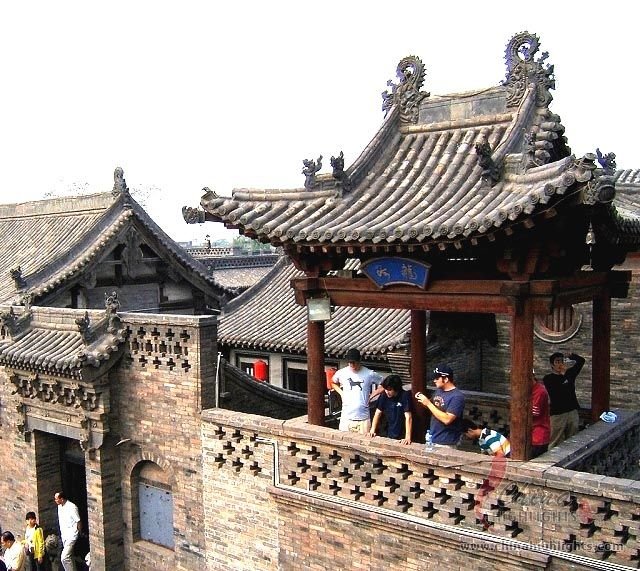4-Day Beijing & Pingyao Highlights Tour
Overview
Once a center of trade and finance, Pingyao still remains much as it did hundreds of year ago and is the best preserved walled city in China.
Highlights
- Ancient City Wall
- The Rishengchang Draft Bank
- The Mingqing Street
- Pingyao Ancient Town
- Jinci Temple
- Qiao Family Compound
Tour Details
- Meals: No Meals
- Hotels: No
- Ancient City Wall: The Ancient City Wall of Pingyao was constructed nearly 3,000 years ago, and at present it still keeps the original appearance of the city wall renovated in the early Ming Dynasty which is several hundred years ago. The contruction method is simply but delicate. Its circumference is about 6,163 meters, with a height at 6 to 10 meters. There are 6 city gates, every day local people and tourists go in and out of the ancient town via the city gates.
- The Rishengchang Draft Bank: Established in 1823, Rishengchang is the first and was the biggest draft bank in China at that time, and had been famous for "Hui Tong Tian Xia", meaning "business conneting the whole world". Rishengchang is located on the West Street of Pingyao Ancient Town. From its establishment via prosperity till its closure, it operated for over 100 years. At Rishengchang, visitors will learn about its development and how it was managed via the exhibitions.
- The Mingqing Street: Mingqing Street is the South Avenue of Pingyao Ancient Town. Buildings and houses of the Ming and Qing Dynasties are preserved quite well, and it is the bustling area and axis of the ancient town. Over 100 shops, restaurants and bars line on this 800-meter-long ancient street. Visitors can shop for some inexpensive souvenirs, watch the ancient buildings and local life, or learn some ancient techniques of making handicrafts.
- Pingyao Ancient Town: Located in the middle of Shanxi Province, this World Heritage Site is one of the four best-preserved ancient towns in China. Inside the intact Ming Dynasty city wall, there are exceptionally well-preserved buildings built in the Ming and Qing Dynasties centuries ago. You can either walk or rent a bike to see around. You can also learn the traditional Chinese art of paper cutting and watch the producing process of laquerware, and many other traditional handicrafts as well. In the evening, the town is especially beautiful with the red lanterns on, and it is very relaxing to sit and chat in one of the numerous bars.
- Chengyifeng Folk-Style Hotel : Chengyifeng is representatives of classical architecture in Ming and Qing dynasty in the old city. It's Well-known at that time. It is the busiest section in the old city. consistsofshops,yards,and attics,is the oldest yards in the ancient town. in the east and adjacent to ancient town wall. And it’s a superior qualityfolk-style hotel, Changyifeng folk-style hotel maintains building style and feature in Ming and Qing dynasty.
- Meals: Lunch at Chengyifeng Folk-Style Hotel
- Hotels: Yide Hotel
 |
|
- Qiao Family Compound: Qiao Family Compound was the residence of Qiao Zhiyong (1818―1907), a famous Chinese financier during the Qing Dynasty. The compound was built in 1756, and went through two renovations and one expansion. It is well-preserved and is regarded as a representative of North China folk houses in the Qing Dynasty. Its magnificent structure and delicate decoration attract numerous visitors. The famous Chinese movie "Raise the Red Lantern" starring Gong Li was filmed there.
- Jinci Temple: Jinci Temple lies at the foothill of Xuanweng Mountain. It was initially built during the Northern Wei Dynasty (386-535), and is famous for its magnificent building complex and excellent art of statue. It integrates ancient consecration buildings, landscape garden, sculptures, carvings, fresco and stele.
- Kangzhuang Restaurant: The Kangzhuang Restaurant is one of the most famous restaurants in Taiyuan. It specializes in Shanxi cuisine (cuisine from the north-western China). It is highly recommended by customers for its good food and reasonable prices.
- Meals: Breakfast, Lunch at Kangzhuang Restaurant
- Hotels: No
- Meals: No Meals
- Hotels: No
What's Included & Excluded
Price Inclusion
- Entrance fees.
- Meals listed in the itinerary.
- Private transfers.
- Private English-speaking guide and driver.
- Hotels listed in the itinerary.
- Service Charge & Taxes.
- China Life Tourist Accident/Casualty Insurance.
- Luggage Transfers.
Price Exclusion
- International Airfare or Train Tickets to enter or leave China.
- China Entry Visa Fees.
- Excess Baggage Charges.
- Personal Expenses.
- Any meals that are not mentioned in the tour itinerary.
- Single Room Supplement.

